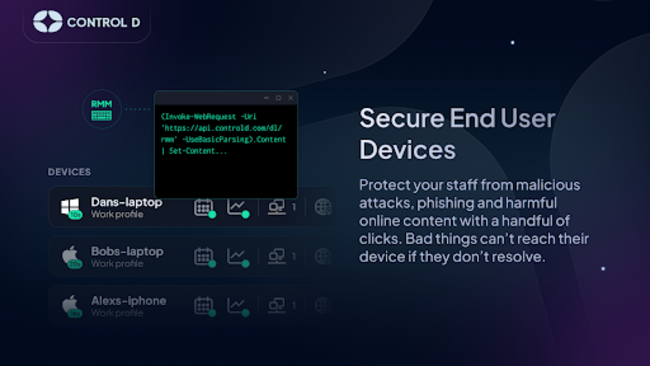What precisely is an IT infrastructure plan, and why is it so important to the business? IT infrastructure strategy is fundamentally concerned with the development and implementation of a framework of technology components such as hardware, software, networks, and data centers that support an organization’s overall goals and operations.
According to Gartner, by 2025, 51% of organizations will transfer their attention from on-premise infrastructure to cloud-based platforms in order to attain scalable and agile information technology. This change emphasizes the need of a well planned IT infrastructure strategy for being competitive in a quickly changing technology world.
Having a strong IT infrastructure is no longer a luxury, but a need for most companies, it serves as the foundation for organizations’ operations, services, and, ultimately, customer experiences. Organizations that engage in a comprehensive IT infrastructure plan may streamline processes, lower costs, improve security, and encourage an innovative culture.
Assessing Your Current IT Infrastructure
Starting an examination of your IT infrastructure is a critical step toward future-proofing your firm. This is a chance to uncover efficiencies and provide the groundwork for technical growth.
Evaluating Existing Systems
The first step in changing your IT infrastructure is to thoroughly evaluate your current systems. This rigorous evaluation entails a thorough examination of your present hardware, software, networks, and data management processes.
Consider using a range of evaluation tools and approaches to accurately evaluate your systems’ performance and capability. SolarWinds, Nagios, and ManageEngine OpManager are examples of tools that may give complete insights into the health of your network, whereas software inventory management systems assist you keep track of software consumption and licensing.
Identifying Pain Spots and Opportunities
Once you’ve thoroughly evaluated your existing IT systems, the next step is to identify areas of inefficiency and potential for improvement.
Look for common pain spots such as:
- System downtimes,
- Slow network performance
- Security vulnerabilities
Are your systems scalable to meet future business needs? Is there a high incidence of IT related issues that hinder employee productivity?
In this phase, feedback from end-users, including employees and customers, can be invaluable. They can provide practical insights into the everyday challenges and limitations of your current infrastructure.
Additionally, benchmark your systems against industry best practices to see where you stand in comparison to competitors. This process is not just about spotting problems but also about uncovering opportunities.
Perhaps there’s potential for automation in certain areas, or maybe adopting cloud solutions could significantly improve data accessibility and collaboration. Identifying these opportunities is crucial for a proactive IT infrastructure strategy that supports growth and innovation.
Developing a Forward-Thinking Strategy
Developing a forward-thinking IT infrastructure strategy is crucial for aligning technological advancements with business growth and innovation objectives.
Setting clear objectives
The foundation of a forward-thinking IT strategy is to establish clear, practical, and quantifiable objectives that are in sync with your entire company goals.
Begin by identifying what success looks like in your organization. Is it about increasing efficiency, cost savings, improved security, or remaining ahead in a competitive market? Use clear, quantifiable goals such as increased system uptime, shorter response times, or a specified percentage in cost savings.
These objectives should not only address your present company demands, but also foresee future trends and issues.
Embracing Emerging Technologies
Consider how incorporating technologies like cloud computing, artificial intelligence, and the Internet of Things may help your firm grow. Cloud computing provides scalability and flexibility, AI may provide intelligent automation and data insights, while IoT links and simplifies a variety of corporate operations.
Consider how these technologies will fit into your existing infrastructure, and plan for a phased integration that corresponds with your goals.
The objective is to use these technologies not merely for modernization, but also to provide concrete commercial value and a competitive advantage.
Implementing the IT Infrastructure Strategy
Launching your IT infrastructure strategy requires careful preparation and execution. It is like putting together a difficult puzzle where every piece has to fit perfectly.
Prioritization and Roadmap Creation
First up, let’s talk about getting your priorities straight and mapping out the journey. It’s not about tackling everything at once. Think about what will make the biggest impact and start there. Is it upgrading your network security or maybe moving to cloud storage?
Once you’ve determined your priorities, create a road map. This is not fixed in stone, but it serves as a guide to help you stay on course. Think about goals and deadlines, and be prepared to adjust when things change, as they will.
Utilizing resources like this site can provide additional insights and tools to effectively navigate and update your road map as needed.
Budgeting and Resource Allocation
Money talks, right? So, budgeting is key. You’ve got to figure out where your dollars will make the most difference. And it’s not just about splashing cash on the latest tech. It’s about smart spending – maybe you need more skilled staff, or perhaps it’s better software.
Balance your budget between new investments and maintaining what you’ve got. Remember, a fancy new system is no good if you can’t afford to run it.
Ensure Flexibility and Scalability
You will need to maintain your IT infrastructure nimble and ready to grow. So, create an IT infrastructure that is ready to adapt. This implies selecting solutions that can be readily scaled up or down.
Consider cloud services that allow you to add extra storage on demand, or modular network architectures that allow you to plug in new technology as required. Flexibility is your friend here, it will save you a lot of trouble down the road.
And finally, never take your eye off the ball. Continuous monitoring is crucial. It’s like having a health check-up for your IT systems on a daily basis. Use analytics to spot trends, keep an eye out for new tech that could give you an edge, and always be ready to tweak and improve.
Conclusion
Looking ahead, the world of IT infrastructure is never going to stand still. It’s going to keep evolving, with new technologies always around the corner.
The key? Stay curious and adaptable. Keep an eye on trends, be ready to embrace new tech, and always think about how it can serve your business goals.
Whatever your next step is, just remember – the goal is to build an IT infrastructure that’s not just about keeping the lights on, but powering your business forward into the future.







